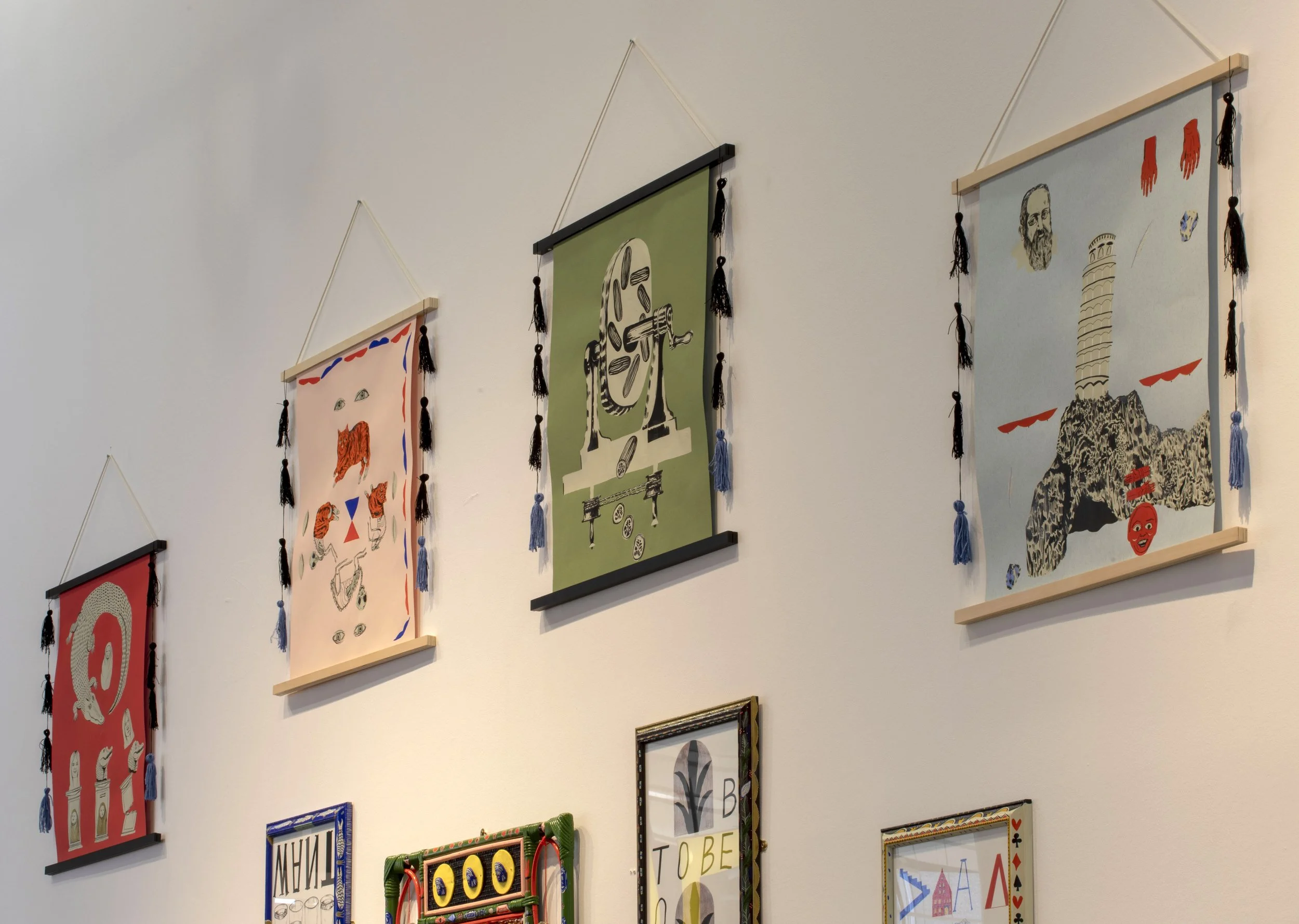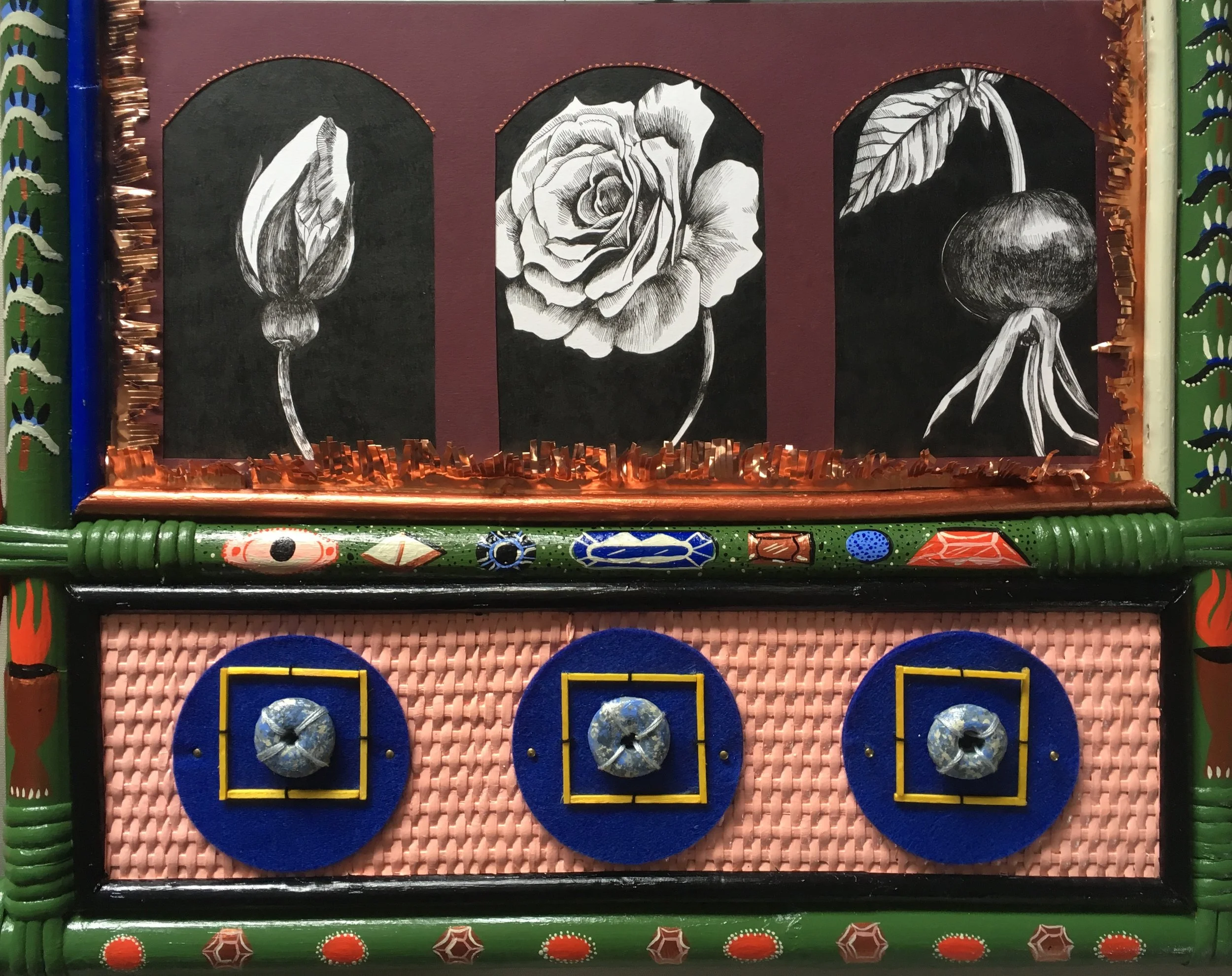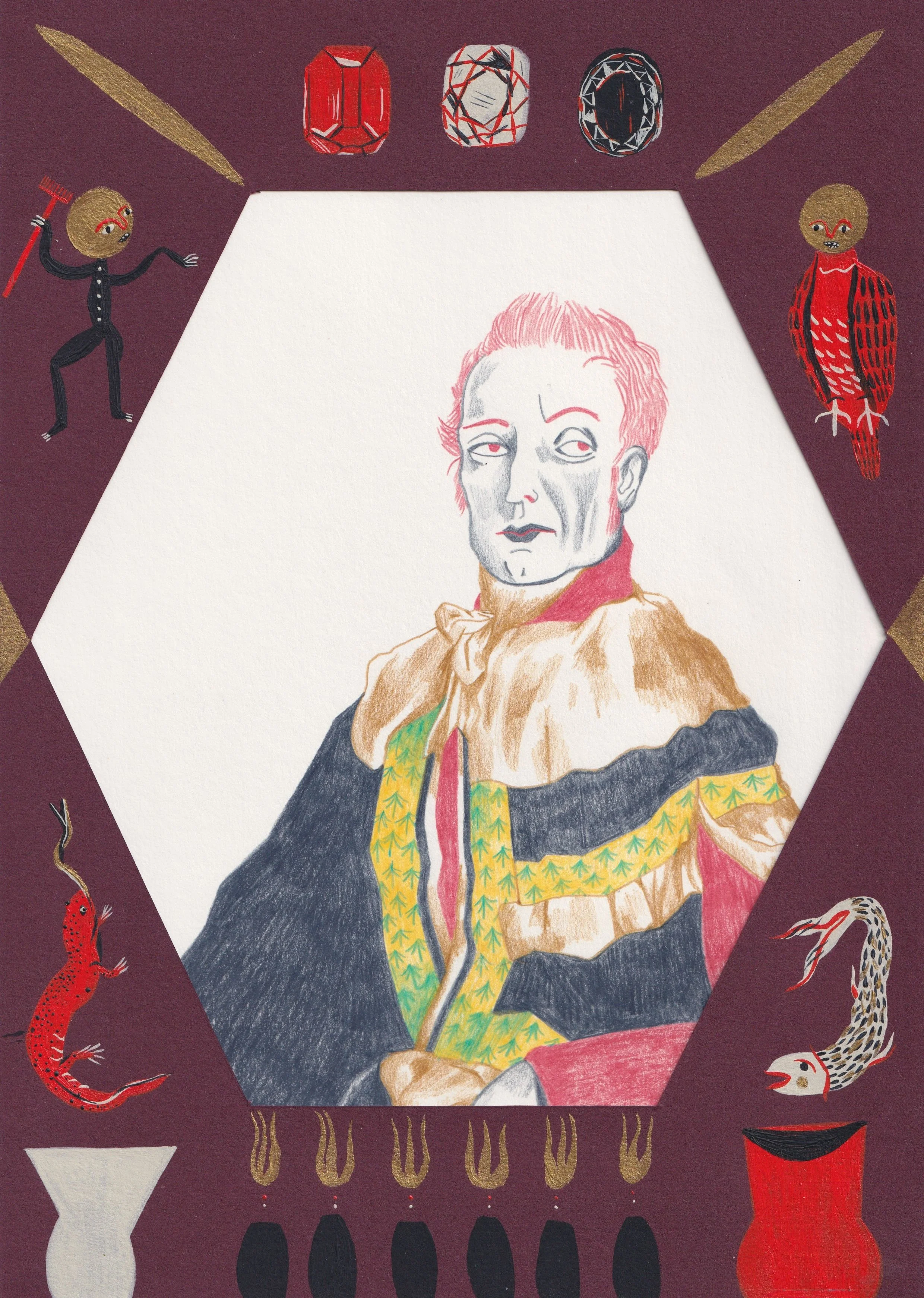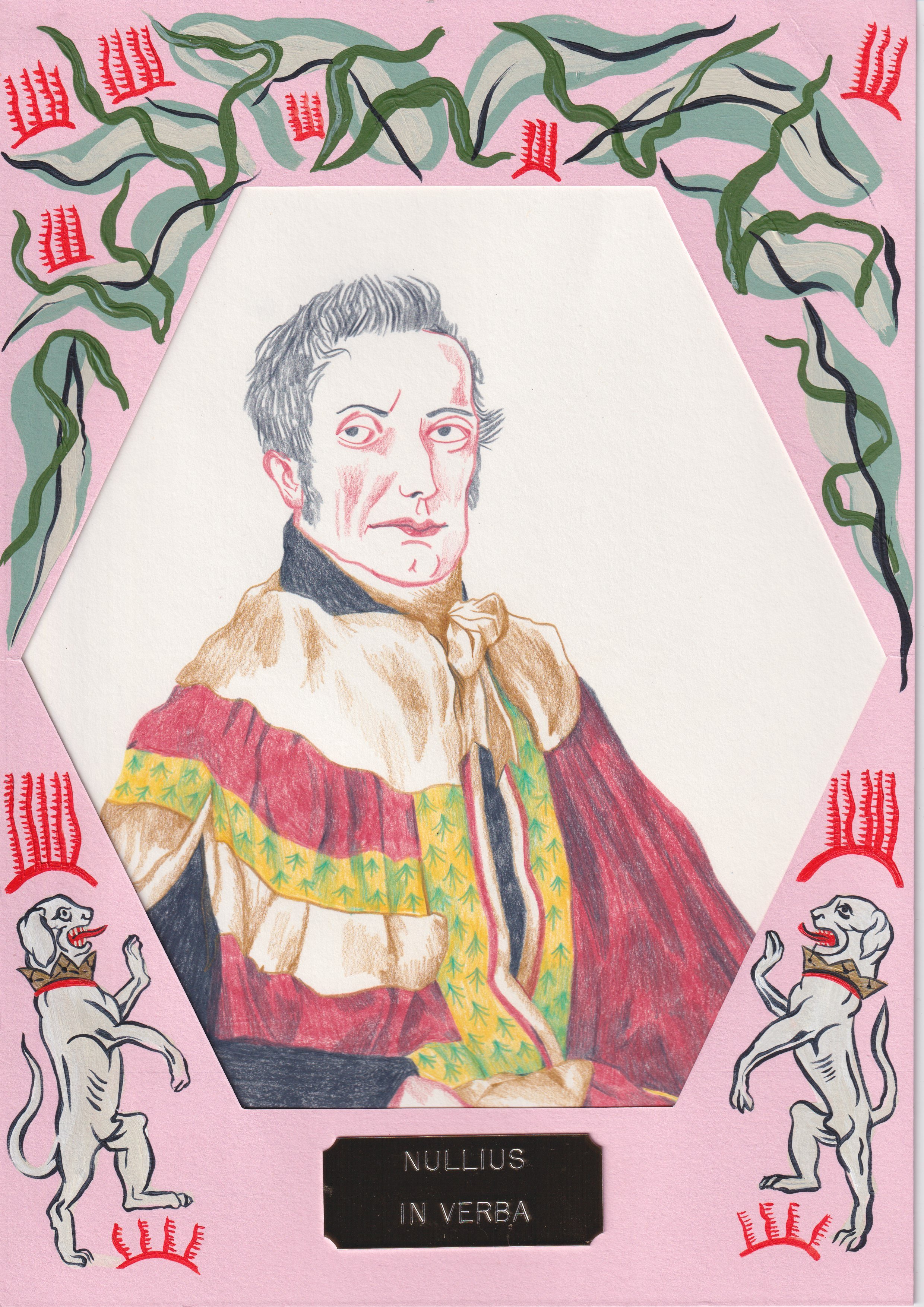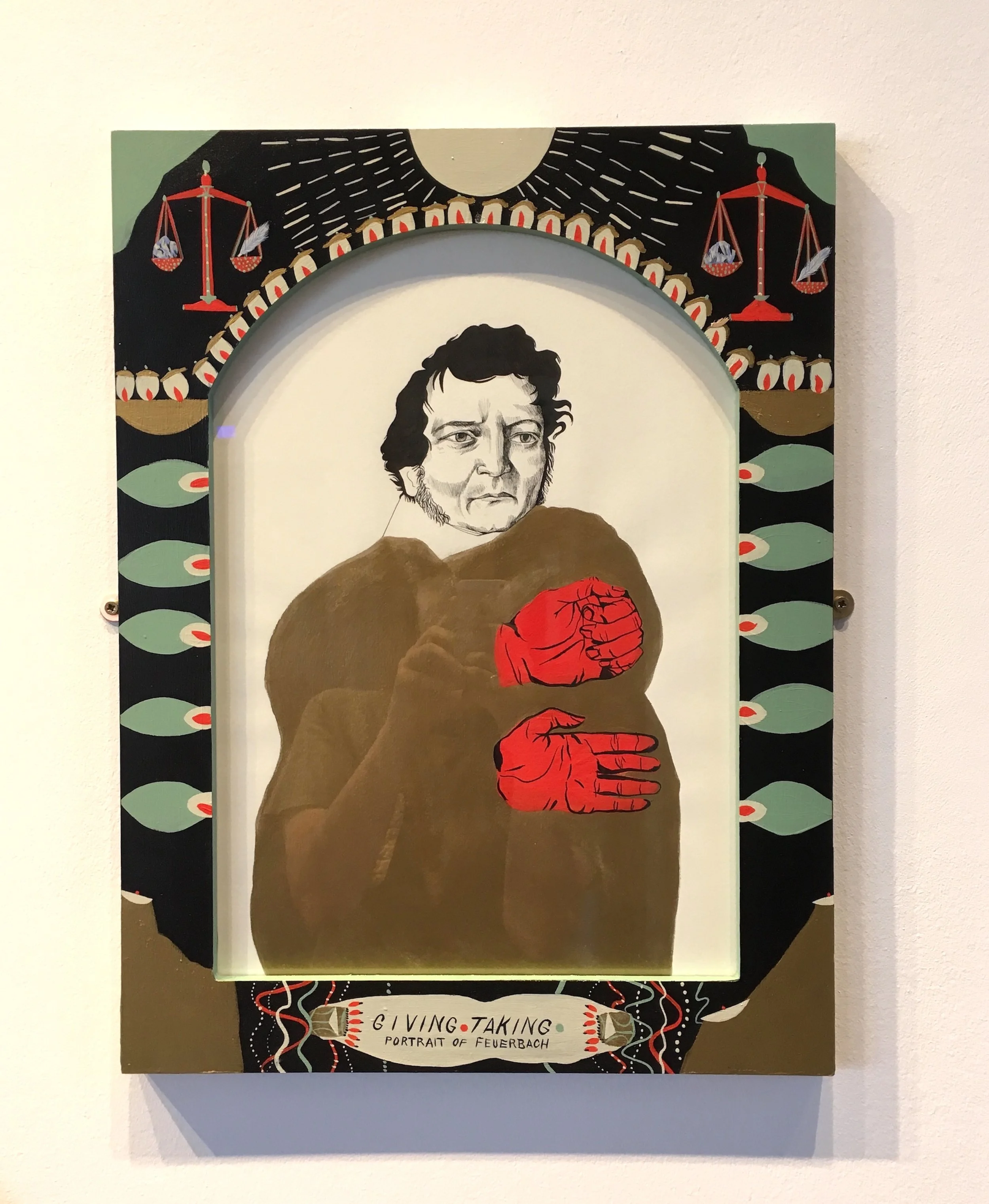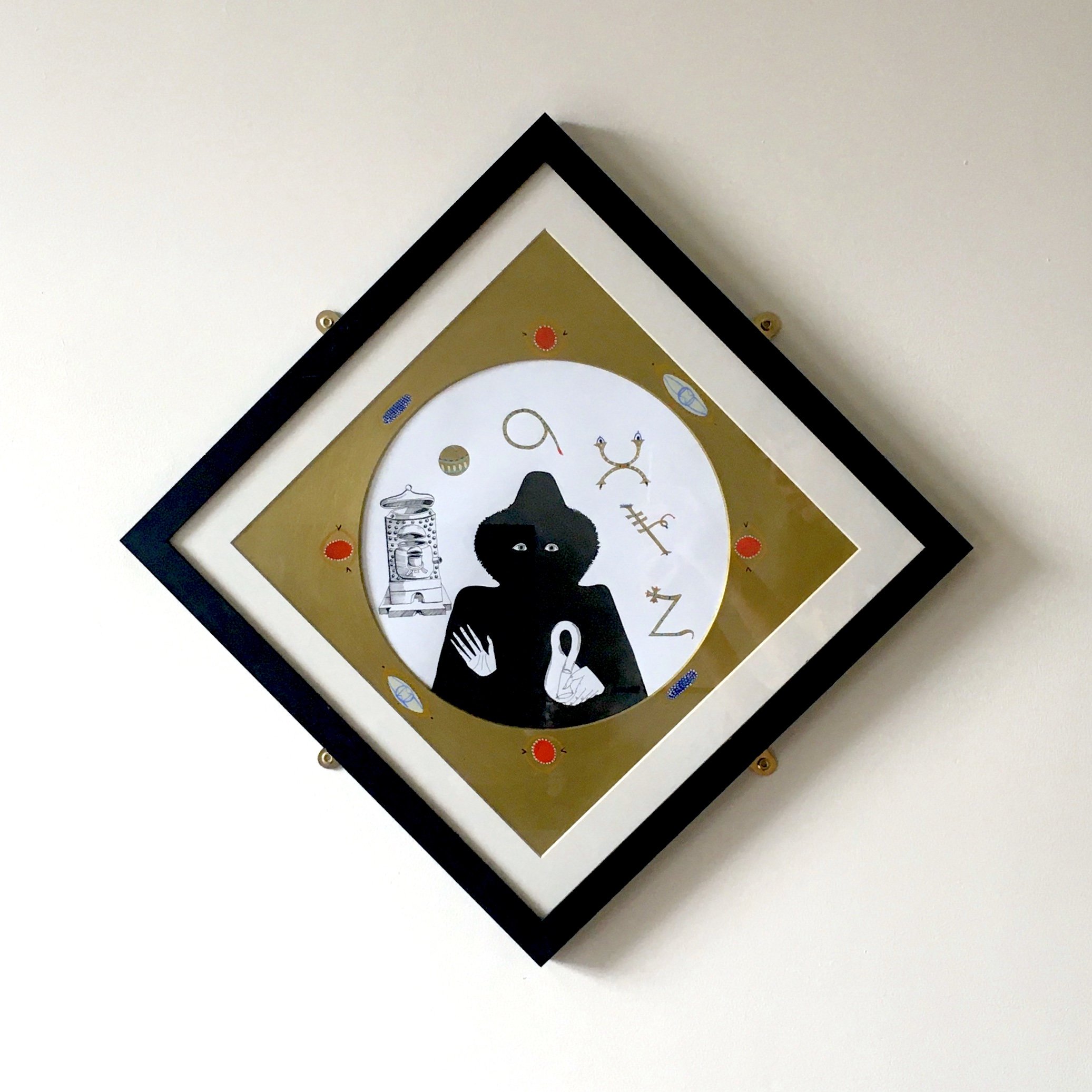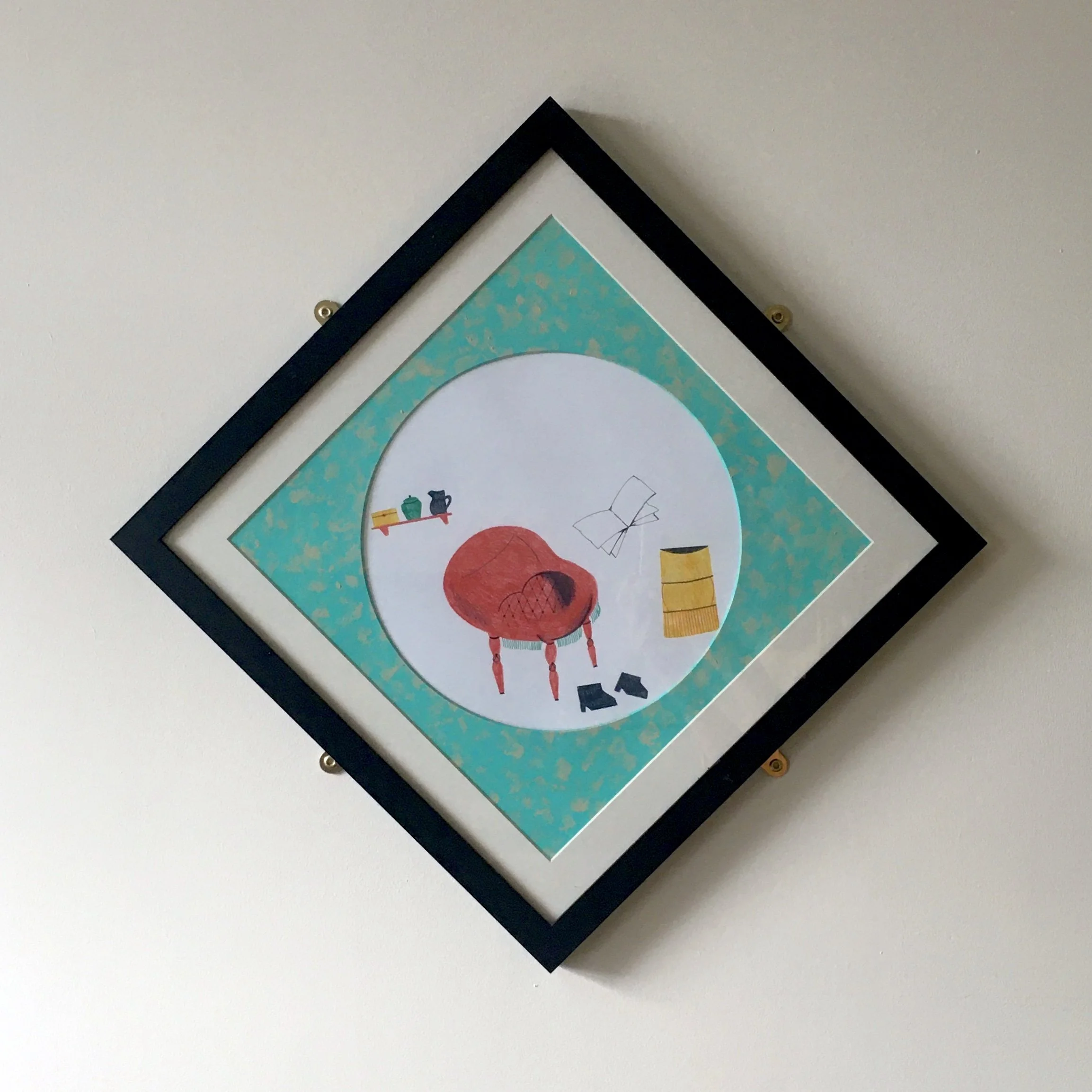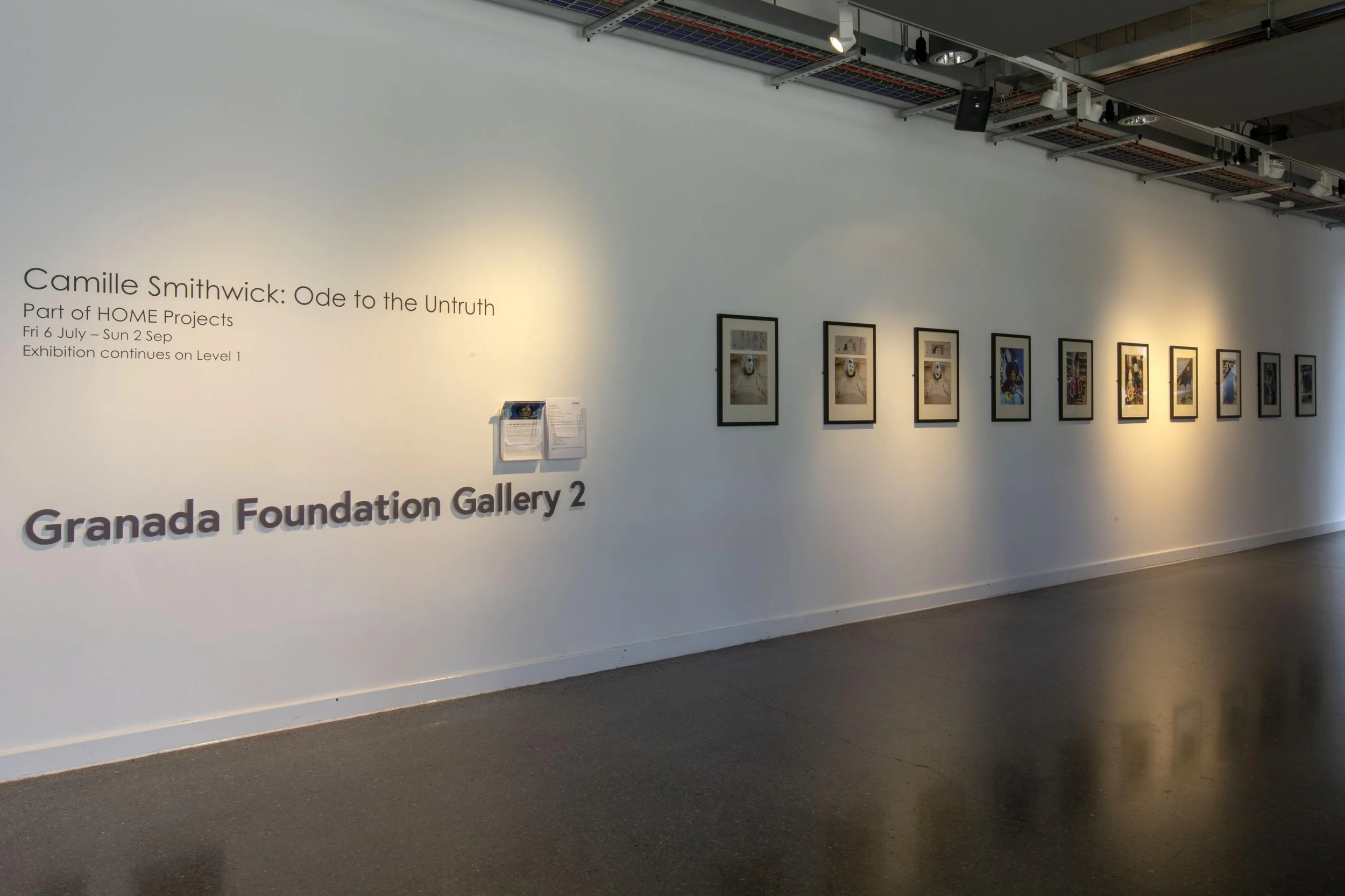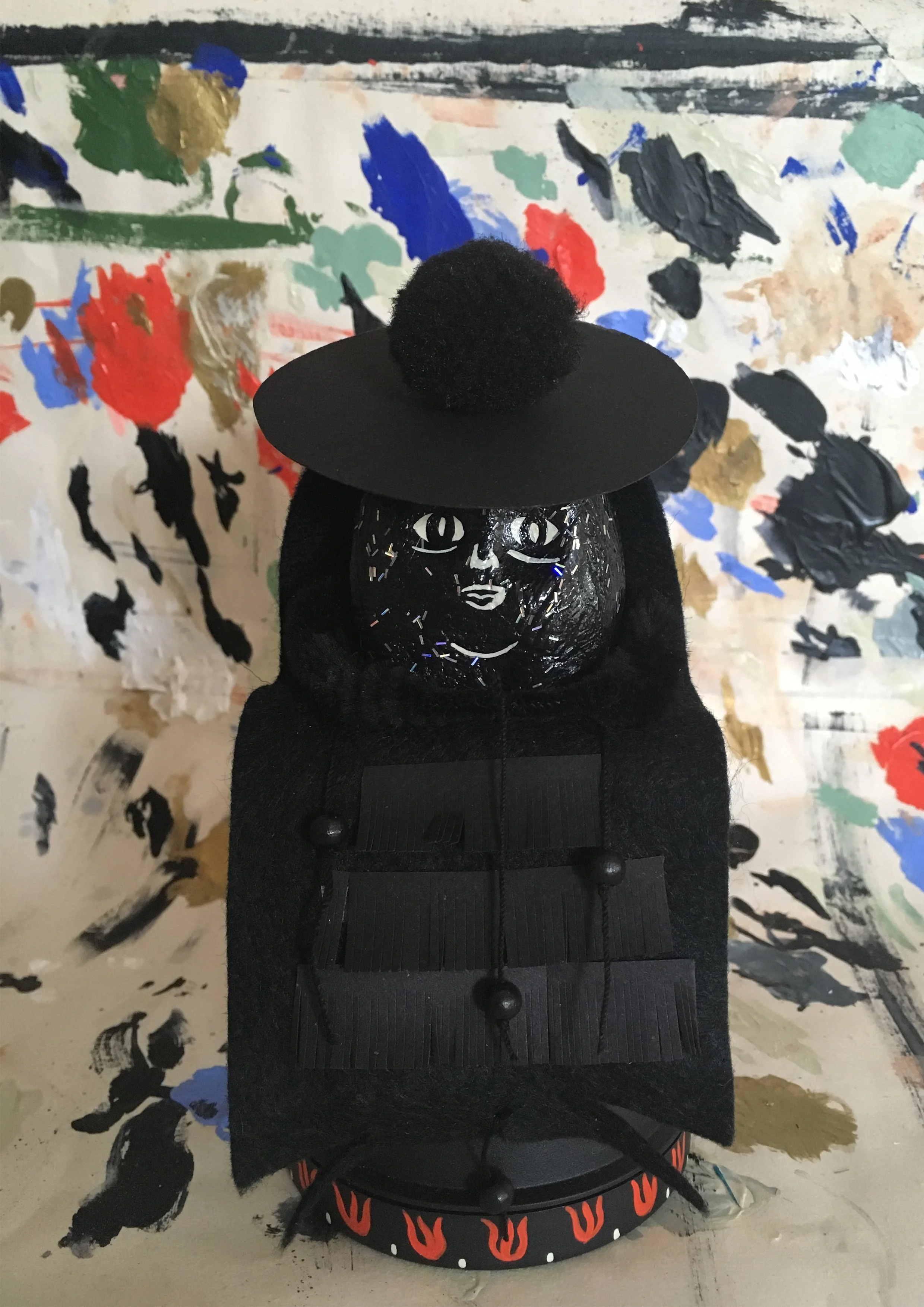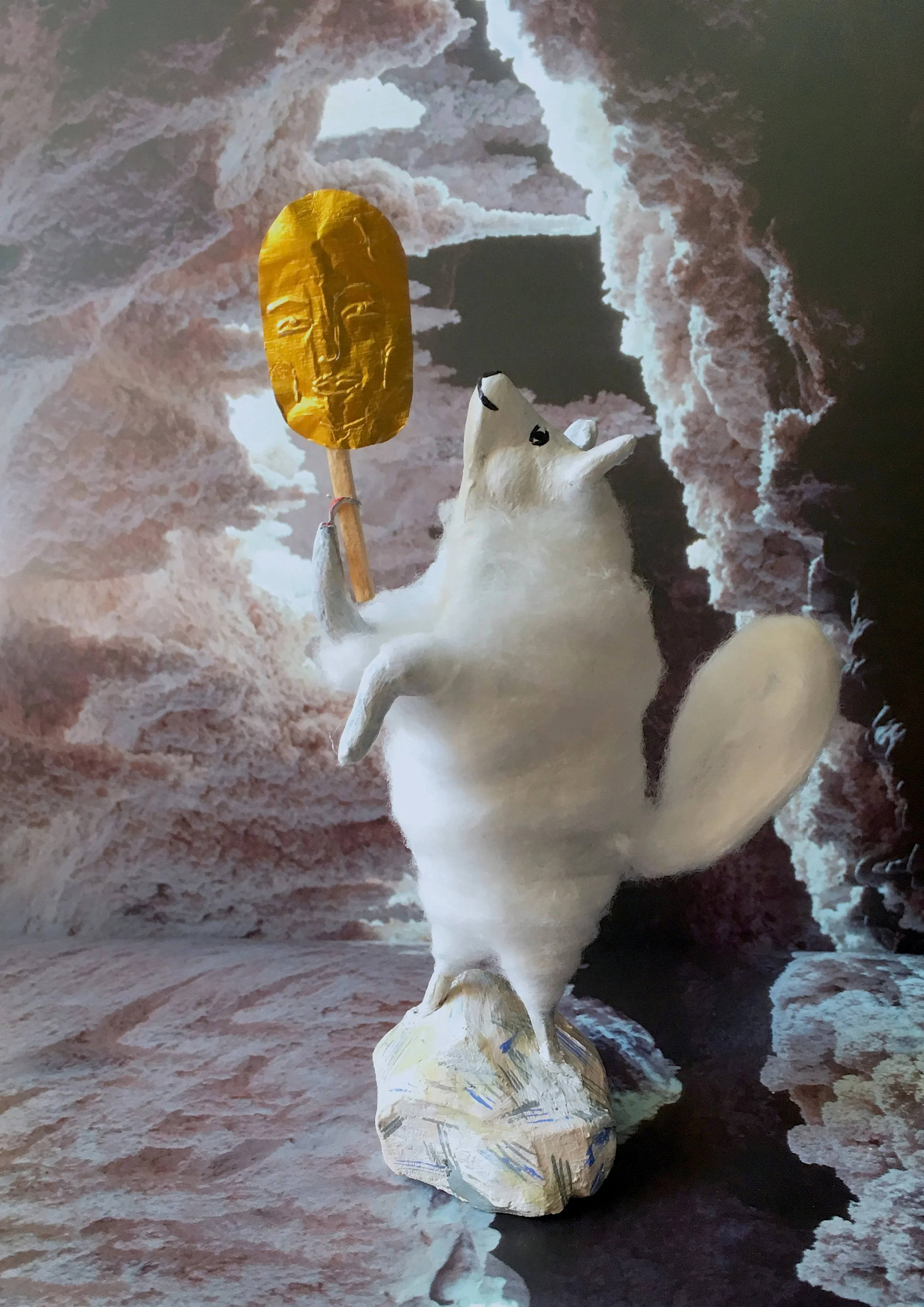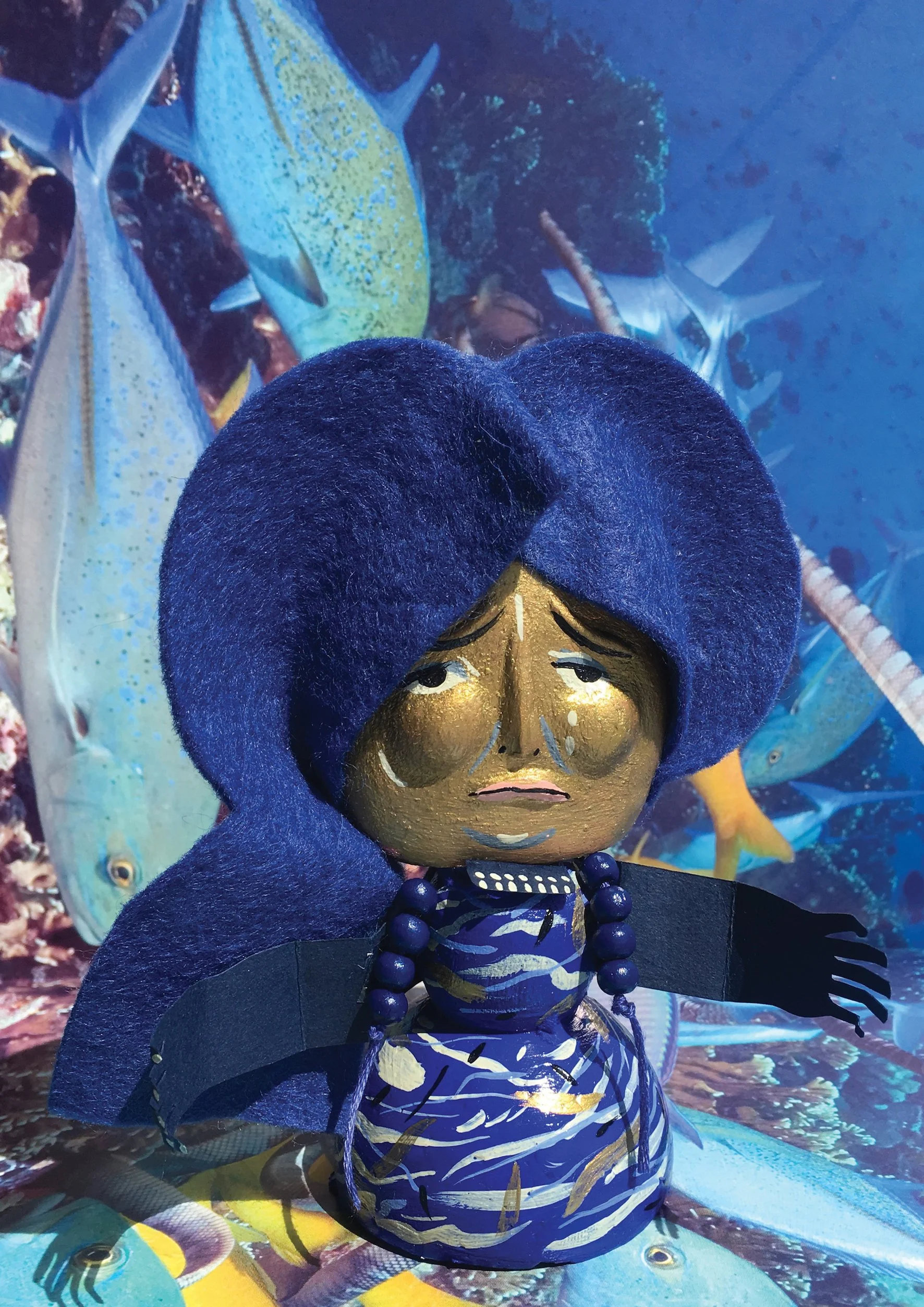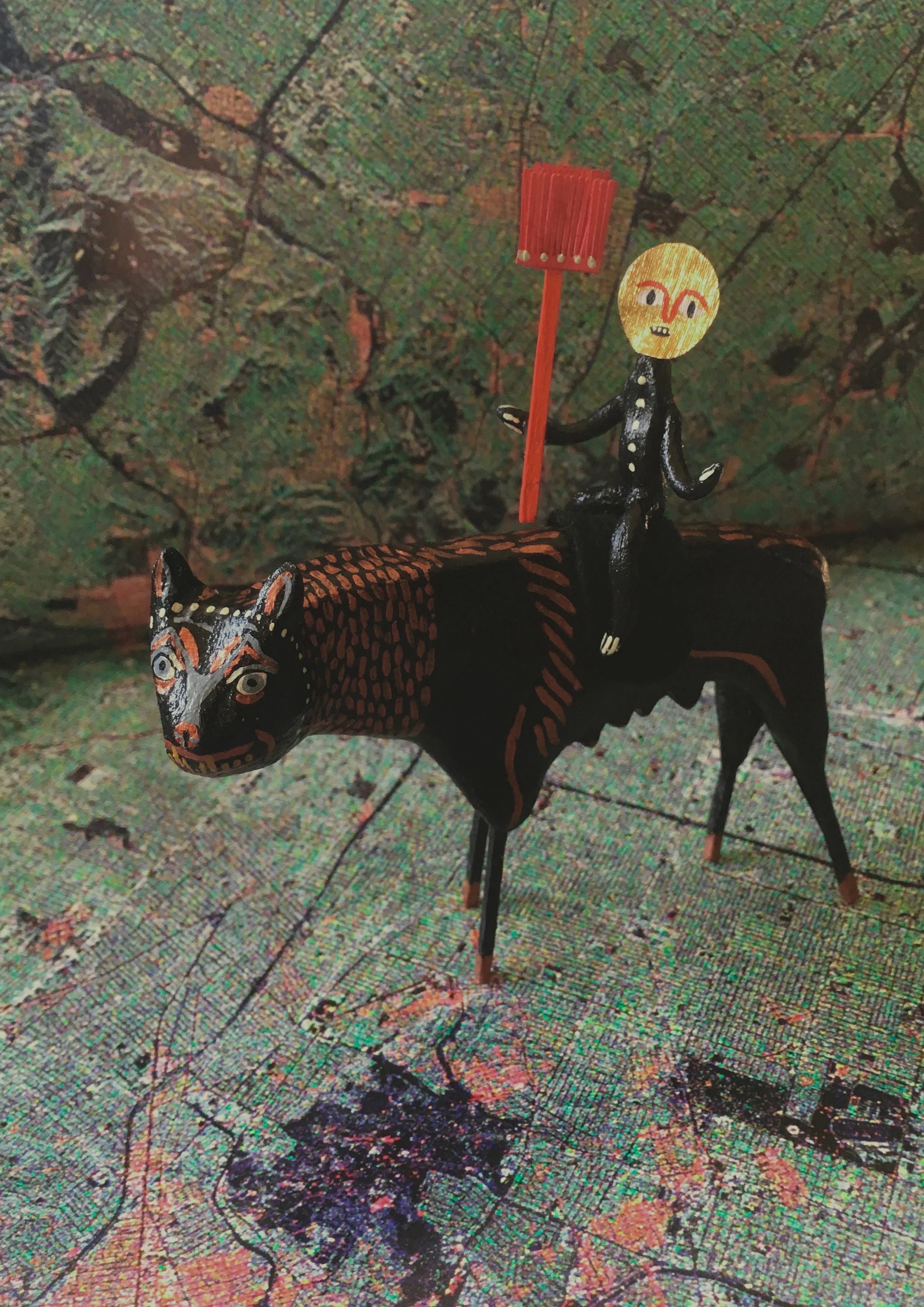ODE TO THE UNTRUTH
July 2018 - September 2018
Granada Foundation Galleries, HOME, Manchester
Ode to the Untruth took the story of Kaspar Hauser as a celebration of both our search for knowledge and acceptance of the unknown. The truth is not only light and easy but also blurred, distorted and chaotic; when answers are found more questions arrive.
Kaspar Hauser was a teenager who seemingly appeared out of nowhere and stumbled into Nuremberg in 1828. Allegedly having been held captive in a cell by a mysterious man whose face he never saw, rumours abound about Hauser’s true origin, including theories of aristocratic descent, a renegade teleportation or an imposter trying his luck in a new town.
Gallery One displayed the origin theories of Hauser, hung in salon style and inspired by a Tarot spread.
Gallery Two displayed a series of photographs of figurines inspired by the dreams of Hauser and the idea that a truth lay within his unconscious.
Initially living in the local prison, Hauser had no memory of life before ‘the cell’ and no idea of basic concepts for everyday living; believing a glass of water refills on its own. Despite reports across Europe of his mysterious appearance, no light was shed on his origin. After two previous attempts on his life, Kaspar was murdered by an unknown assailant in 1833 (or took his own life, depending on who you want to believe.)
The truth is unknowable, even to Kaspar himself, however the key to his origin was thought to be revealed in his dream life. These dreams were recorded by his host Georg Friedrich Daumer and have been described as disturbing experiences between visions, hallucinations and dreams. Reimagined glimpses into the unconscious are displayed on Level 2; did they really reveal Kaspar’s true self or was he merely influenced by suggestions from those around him?
The same story can be viewed many different ways, but where do these ideas come from? Without memory or understanding of the world, how did Kaspar view the visual symbols we unconsciously read every day?
Four Paradoxes
The Thing In Itself - Portrait of Kaspar
Earl Stanhope Reversed
Earl Stanhope Adorned
Giving/Taking - Portrait of Feuerbach
The Alchemist - Charles Fort's Teleportation Theory
Here One Minute - Charles Fort's Teleportation Theory
Gone The Next - Charles Fort's Teleportation Theory
The Man - 'The Dreams' Series
Reynard in White- 'The Dreams' Series
Mother - The Dreams' Series
The Imp & The She-Wolf - 'The Dreams' Series

